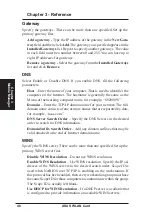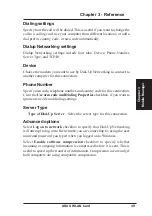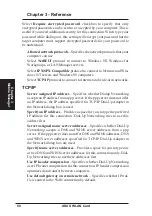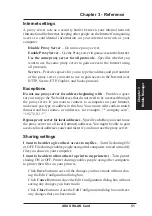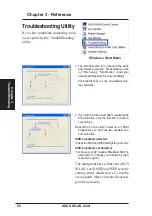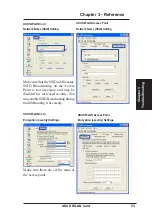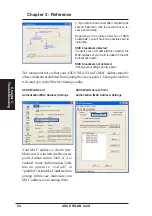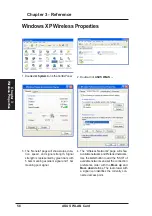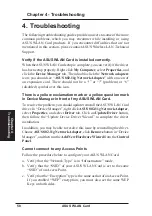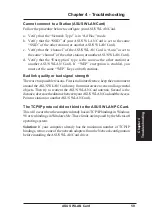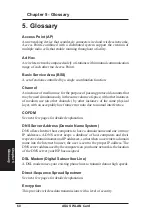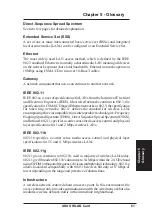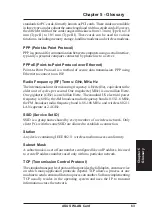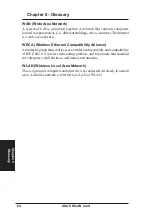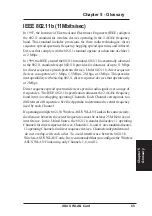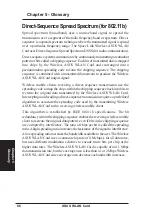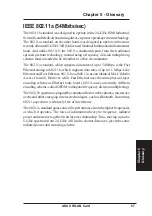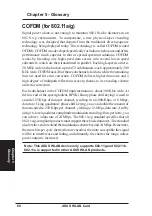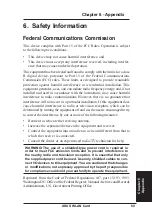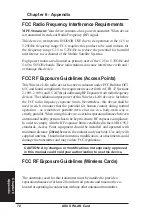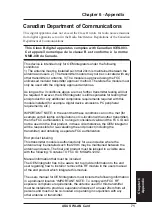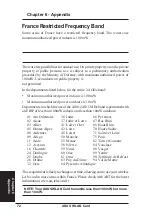
62
ASUS WLAN Card
Chapter 5
Chapter 5 - Glossary
Glossary
IP (Internet Protocol)
The TCP/IP standard protocol that defines the IP datagram as the unit of
information passed across an Internet and provides the basis for connectionless
packet delivery service. IP includes the ICMP control and error message protocol
as an integral part. It provides the functional equivalent of ISO OSI Network
Services.
IP Address
An IP address is a 32-bit number that identifies each sender or receiver of
information that is sent across the Internet. An IP address has two parts: the
identifier of a particular network on the Internet and an identifier of the particular
device (which can be a server or a workstation) within that network.
ISM Bands (Industrial, Scientific, and Medicine Bands)
Radio frequency bands that the Federal Communications Commission (FCC)
authorized for wireless LANs. The ISM bands are located at 902 MHz, 2.400
GHz, and 5.7 GHz.
ISP (Internet Service Provider)
An organization that provides access to the Internet. Small ISPs provide service
via modem and ISDN while the larger ones also offer private line hookups
(T1, fractional T1, etc.).
LAN (Local Area Network)
A communications network that serves users within a defined geographical
area. The benefits include the sharing of Internet access, files and equipment
like printers and storage devices. Special network cabling (10 Base-T) is often
used to connect the PCs together.
NIC (Network Interface Card)
A network adapter inserted into a computer so that the computer can be
connected to a network. It is responsible for converting data from stored in the
computer to the form transmitted or received.
Packet
A basic message unit for communication across a network. A packet usually
includes routing information, data, and sometimes error detection information.
PCI
(Personal Computer Memory Card International Association)
The Personal Computer Memory Card International Association (PCI), develops
Summary of Contents for WL-120g
Page 6: ...6 ASUS WLAN Card ...

